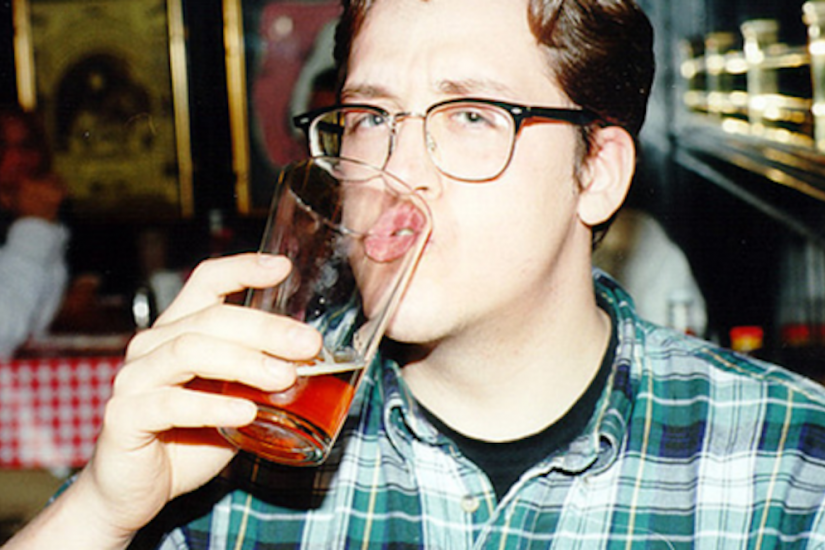* * *
Let's start at the beginning. A shaker glass was, and is, the 16-ounce glass half of a Boston cocktail shaker. They've been stocked behind bars for mixing drinks since the early 20th century, long before their takeover of American draft, as if waiting in the wings.
Enter the post-War years, a time when American beer entered a long, steady decline. Prohibition had forced the vast majority of small breweries out of business, leaving mostly larger brands like Schlitz, Anheuser-Busch, and Coors in operation. If you wanted a draft beer, this meant you were kind of drinking yellow, flavorless stuff—and in large quantities, since it had such low alcohol content.
Garrett Oliver, brewmaster at The Brooklyn Brewery and author of the Oxford Companion to Beer, surmises that this dearth of quality beer (though with plenty of mass-market brew to go round) was the shaker glass's opportunity to rise. Why bother with a fancy glass when you're drinking nothing special? "Complaining that your glass wasn't good enough for your beer would have been like complaining your paper plate wasn't good enough for Wonder Bread," he says.
In terms of sheer utility, the shaker glass was exceptional. It was cheap, durable, steady, and stacked easily. A server needed to worry less about splashing or spilling than with a dainty flute, or about smashing that fancier glass on the way back to the bar. For managers, using the shaker for draft beer meant you needed fewer kinds of glasses in your bar, saving money and precious shelf space.
The highly functional cup rose to prominence, replacing the smaller glasses and mugs previously common in the States—which, by the way, weren't even necessarily 16 ounces. To find a "pint" in pre-war America, you'd generally have to seek out a traditional British pub. Shakers did much to standardize our sense of how much beer should come in a glass (more on that later).
So millions of Americans wrapped their hands around shaker glasses, to drink millions of pints of mass-market beer, more than any other kind of alcohol, for the duration of the century. (The 20th century, that is; Americans drank an astonishing amount of hard liquor in the late 1800s.)

